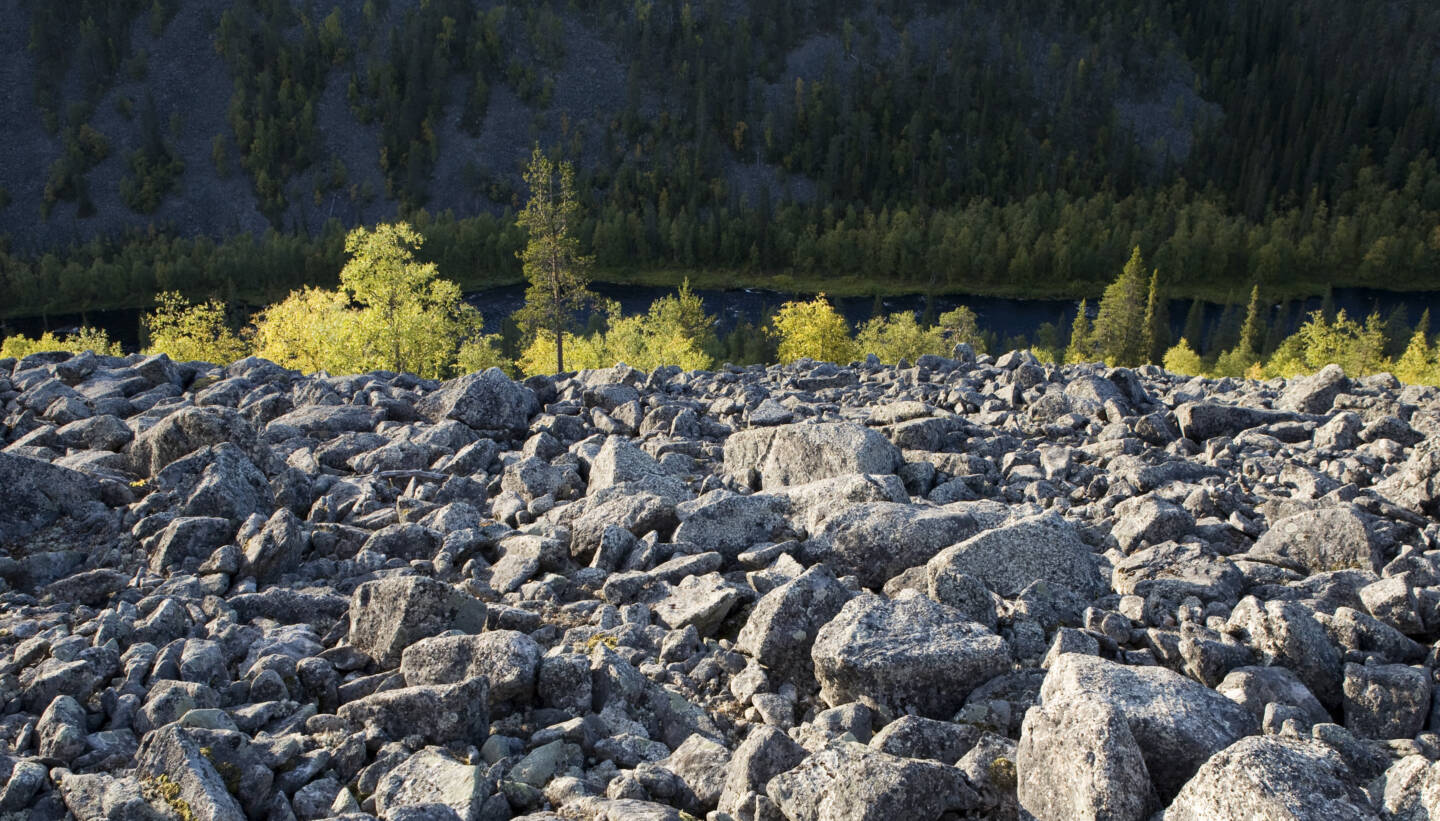
Rocks, cliffs and stony habitats
Rocky terrains, stony grounds, and boulder fields are estimated to cover slightly less than three percent of Finland's land surface area. However, ecologically useful data is comparatively scarce, making precise quantification challenging.
Despite occupying a small fraction of the land area, rocky and stony habitats are of significant importance to Finland's biodiversity. Approximately six percent of Finland's known species primarily inhabit various rocky environments, making their importance to the species more than double in relation to their area coverage.
Indicators specific to rocky environments are still under development.
Rock formations are most common on the southern coast, Finnish lake palteau, and alpine areas
Rocky habitats cover about two percent of Finland’s land surface area. This includes all cliffs and rocks where the soil layer is no more than twenty centimeters thick and the canopy cover is less than thirty percent. On the other hand, contiguous rocky and boulder fields make up only about half a percent of the land area.
Rocky and stony environments are primarily concentrated along Finland’s southern coast, in the Lake Finland region, and in the mountain areas of Lapland. This site includes examinations of mountain and coastal rock environments, as well as inland water and Baltic Sea shoreline rocks.
Rocks and stony grounds as a habitat for specialized species
Rocks provide diverse habitats, which can vary greatly over short distances in terms of light, moisture, acidity, and nutrient content. Because of this structural diversity, rocky environments are significantly more important to Finland’s biodiversity than one might expect based on their area: of the twenty thousand species in Finland whose habitat requirements have been assessed, about six percent primarily inhabit rocky environments.
Many species of rocky environments are specialized to withstand large variations in moisture and temperature. The majority of the species in rock habitats, over eighty percent, are mosses and lichens, but many vascular plants and butterfly species primarily occur in rocky habitats as well.